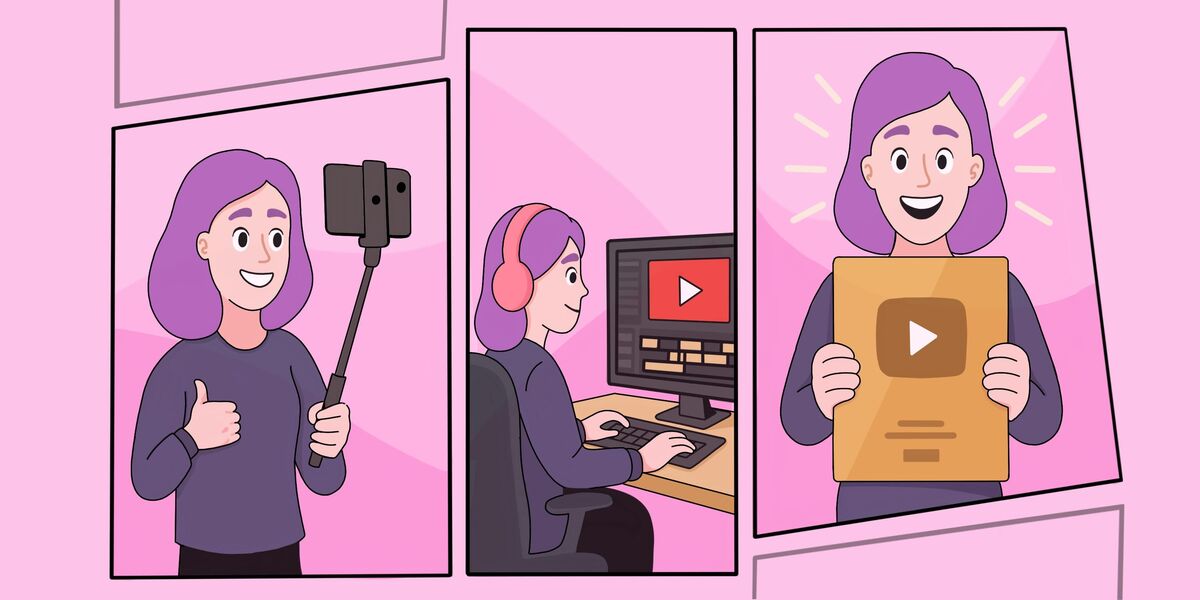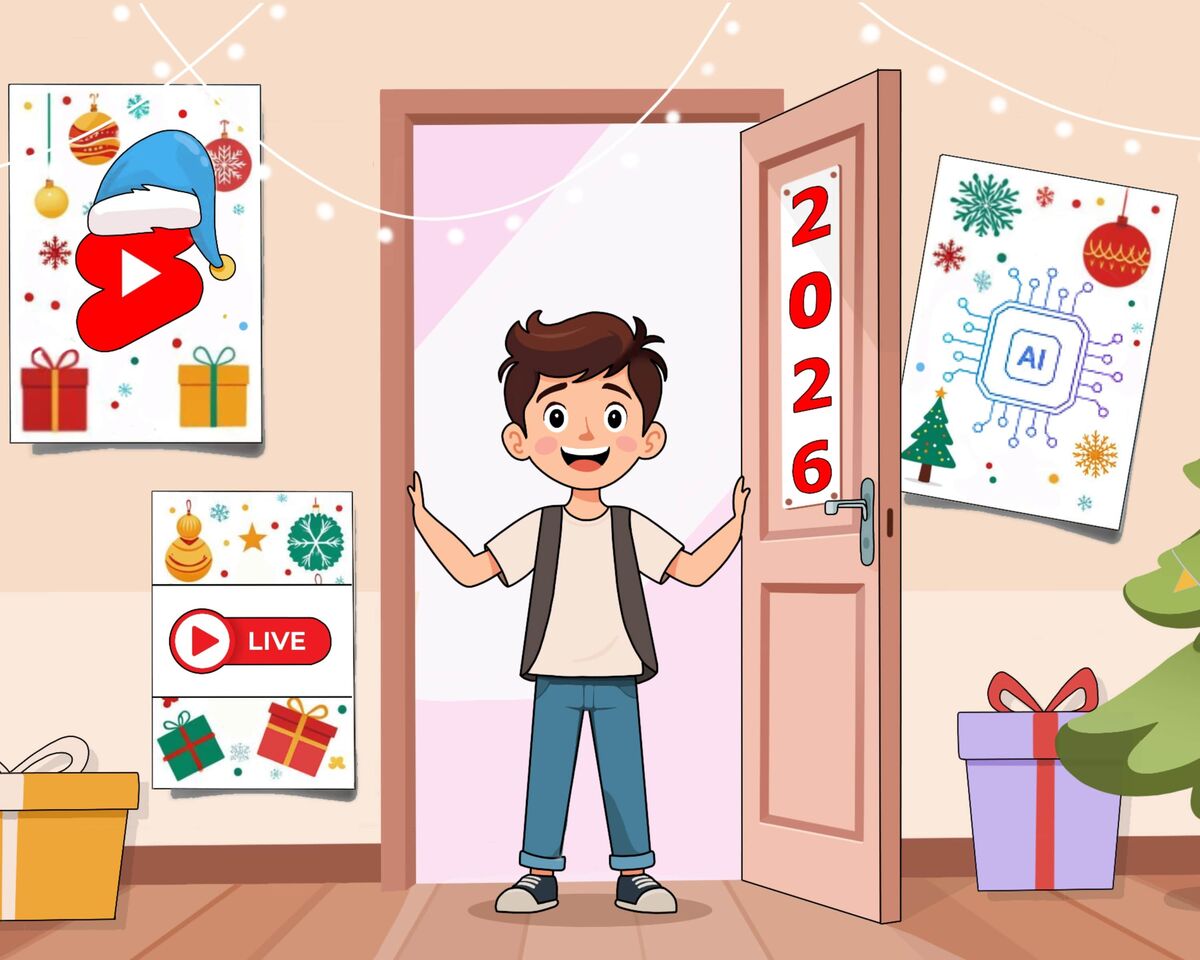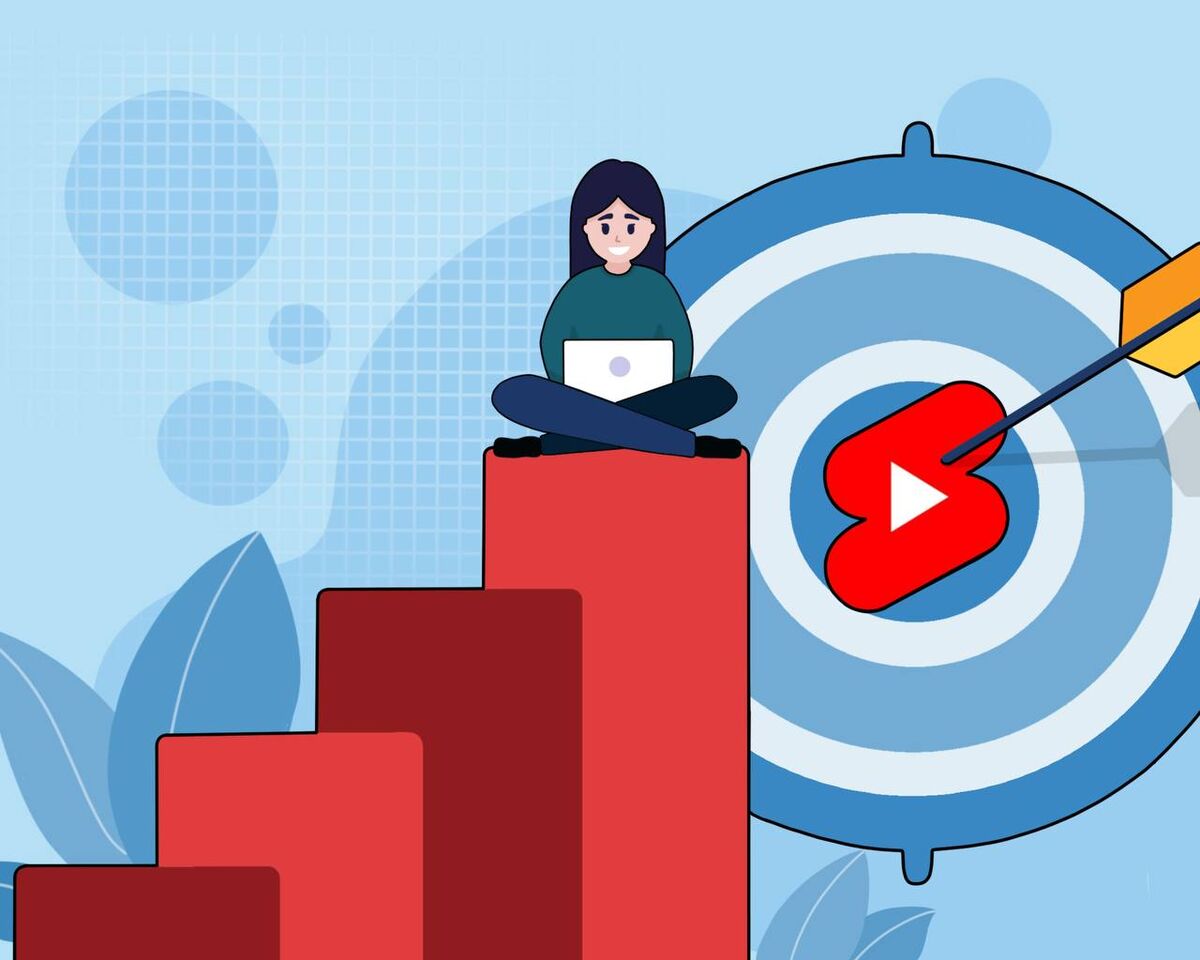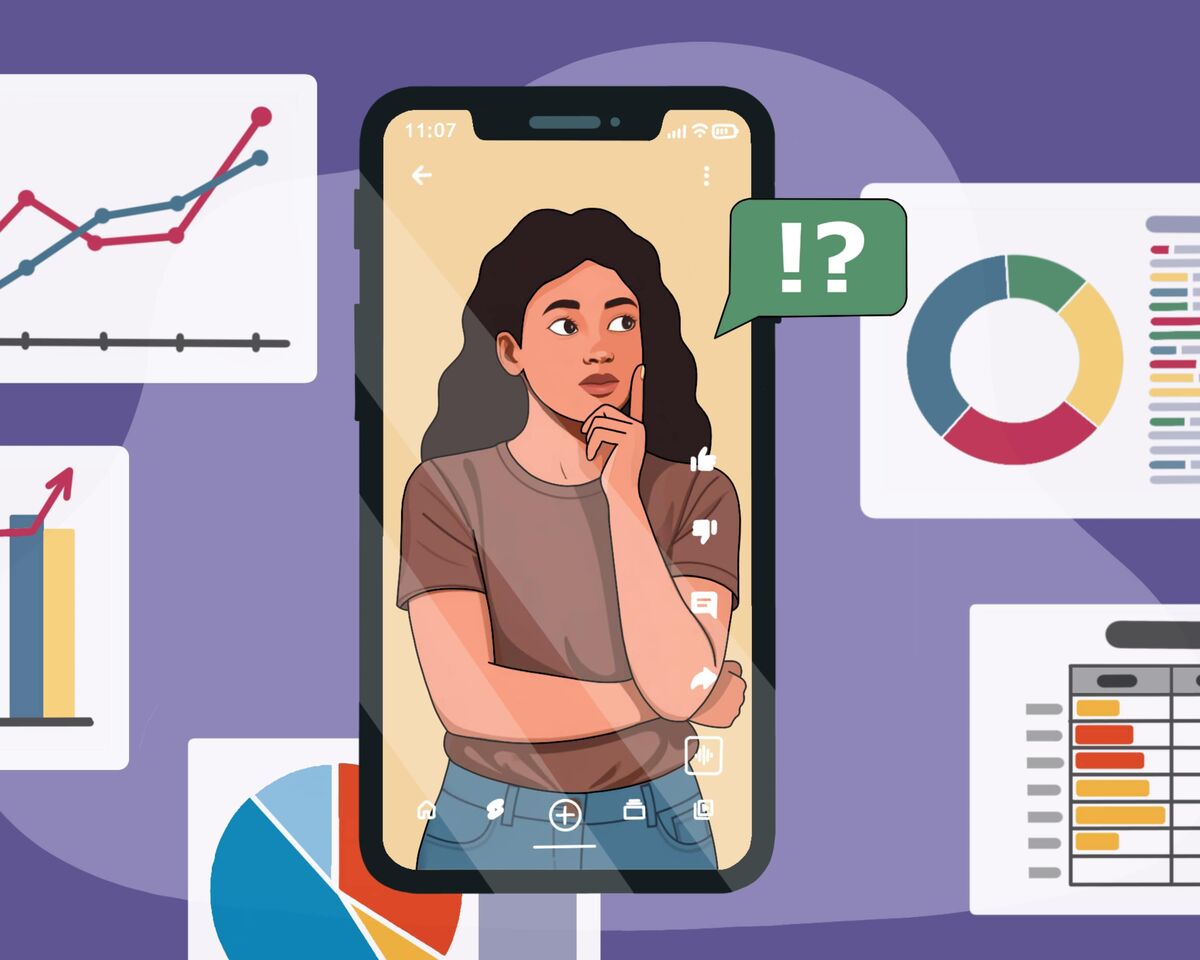Why Video Editing Skills Are Essential for All YouTubers

To be fair, it should be said that most creators do just that. But at the same time, there are many other YouTubers who end up abandoning their channels precisely because they don't see growth in metrics and audience engagement, simply because they don't know what a ready-to-publish video should look like and what methods exist for preparing it.
This leads to creators doing everything chaotic or just the way they personally like it, without even thinking about the fact that viewers will actually be watching their videos.
And so that your audience never loses interest in your videos and doesn't regret wasting their time watching them — let's still talk about editing and how to do it properly.
What are planning and editing in YouTube videos?
If you go to Google to find out what editing is, you’ll get a rather curious definition:
Editing is a multifaceted concept with the following main meanings: a type of professional activity related to preparing printed publications, TV and radio broadcasts, and films for release.
This means that the editing process refers only to the final stage of preparing content for release — in our case, video editing.
Let’s pay attention to a few key words in this definition.
First, video editing is used to structure information. This implies that the final material (your video, in this case) must contain a storyline, a logic, not just a bunch of random stuff with no connection or meaning. So the final video should have structure.
Second, framing or shot composition. Again, the definition implies that the video sequence is not just a random collection of visuals — it must be meaningful. The shots should be composed in a way that the video has a clear and understandable form.
So what does this all give us? All our raw footage, after the editing process, should have structure and form.
And now, let’s introduce another important concept — planning.
There’s value in every single word here, but let’s apply the idea of planning specifically to our process of creating a video.
When we come up with a video idea, it always stems from some goal: self-expression, making money, gaining popularity — this depends on each individual creator.
But let’s consider a more universal goal shared by all creators: when we make a video, we want to attract as much viewer attention as possible. To put it simply, the goal of every video is views.
However, if you remember, nowhere in the definition of editing or video editing is there any mention of "planning for viewer views."
That means if we don’t want to skip that part, we have to add planning into our process — and this is where we set the goal: to get views.
Great — now we have planning, which includes a goal for the video. And since the definition of planning includes the phrase "setting future actions," at this stage we can also map out the sequence of how the video will be filmed, so that we’re ready to move on to the editing phase afterward.
But doesn’t it seem like there’s something missing between planning and editing?
If not, we’ll tell you what’s off about this process.
To get the views we want, we at least need to spark interest in viewers.
If you’ve come up with a great video idea, just setting the goal of “getting views” won’t be enough — because we still don’t know how to communicate our idea in a way that will be interesting to people.
And this is the crucial moment: without the viewer’s interest, you won’t achieve your goal of getting views.
To make a video genuinely engaging, it needs a storyline.
Now the picture is complete:
You come up with a video idea and set the goal — to get views. Then you plan the video, and in order to achieve those views, you need to develop a story that will captivate viewers.
Next, you give this story a clear structure and a polished form through editing — and voilà, you have a finished video that can attract views.
Of course, we’ve described the video creation process here in a very simplified way. But here’s the catch — even this set of steps feels like too much work for some creators.
They say, “I’ll just shoot my vlog, edit it quickly, and people will watch it anyway.”
We’re not trying to argue with creators who insist on doing things their own way — you’re free to do whatever you want, however you want.
But we can say this: without planning and a storyline, your chances of getting real audience engagement are very slim, unless you’re already a well-known personality at the time of creating your video.
Meanwhile, newcomers continue to ask themselves questions about why...
- I create content, but YouTube doesn't show it to anyone?
- I create content, but no one watches it?
- I create content, but the platform's reach gets smaller each time?
You might be surprised right now, but at the foundation of each listed situation lies the same problem — your videos are not interesting to viewers. Right now we're not taking into account poor design, weak optimization, or anything else that doesn't relate to the video itself.
- YouTube doesn't show your videos to anyone because they don't watch them, don't leave reactions
- No one watches the content because, again, it's not interesting to anyone
- Views drop because people stop liking your content, it stops being interesting for them to be with you.
This doesn't mean at all that you are a bad or boring creator. It only means that your content is not interesting to viewers.
Of course, there can be several factors that influence this, but right now we are focused on planning, plot, and editing. And these three stages are precisely the key to creating interesting and successful videos.
Just remember that the video editing process is directly connected to the script or plot that you create.
In general, our happy trio — planning, plot creation, and editing — can be broken down into even more detailed components.
Video idea → topic research (selecting materials and articles, studying the topic's relevance and viewer interest in it) → draft script (thesis plan, "skeleton") → writing a full script and shooting plan (or simply creating a thesis plan for the video) → selecting locations and props (if necessary) → filming the video → editing.
Did you notice how many points are listed in video preparation? All of this is not accidental, and we'll examine for whom and why such an approach to preparing and creating videos is suitable, and what its pros and cons are.
Let's highlight three popular formats of creators' work with videos:
- complete improvisation: an idea comes to your head, and you immediately go to implement it
- partial improvisation: an idea comes to you, you go to implement it with minimal preparation
- complete planning: an idea comes to you, you fully think it through and go to implement it.
Each of these approaches works, has a right to exist, but not every creator will be suited to each of them. Let's figure out why.
Complete improvisation
Above we described a rather complex and multi-level scheme for creating videos. A reasonable question arises — why is all this needed?
This is an eternal question from everyone who believes that such an approach only complicates creators' presence on the platform, and that quality improvisation is something literally everyone possesses.
But here's the thing: speaking interestingly and consistently, maintaining a plot in your speech from beginning to end — this is a very high-level skill that only professional speakers possess, they train it for years and develop it through constant practice.
And let's be honest here — most creators who work without a script and structure don't possess such a level of oratory mastery, which is why their videos are filled with incoherent thoughts, logic is constantly lost, and viewers ultimately simply can't understand why they're watching this. And we haven't even started talking about the fact that the creator should also speak well, work with intonation and delivery. That's already something super-professional.
And here let's think about how work on a video happens without a preliminary planning stage. But at the same time, in the end we get a good and interesting video. Yes, this is possible, but with reservations.
If you don't prepare a script or at least a plan for your video, this means you'll be coming up with it during editing. And you'll also be putting everything together into the final video from what you filmed.
There's a suggestion to calculate the hypothetical time you lose in the process of editing a video that initially has no structure.
Let's start with the fact that even the filming process will likely take you a whole day.
First, you'll need preparation, namely finding a location, setting up equipment, working with the frame, which can take more than one hour.
Then the actual video recording process will begin, let's say the main part, where you speak the text. And you'll say everything you have in your head, sometimes remembering something, then forgetting, then returning. And again this will take us an hour or two, during which you'll tell everything you want, make all the successful takes and finish all your thoughts on the topic.
But just a talking head isn't enough, you always need some cutaways, which you'll spend another hour thinking up and filming. And then you'll simply get tired, and this first filming day will end.
Then comes the next stage, filled with pain and suffering: viewing and selecting the filmed material.
To thoughtfully watch even several hours of materials, which include both the main spoken text and cutaways, will require, strangely enough, about 5 hours of continuous work. And in the end you'll only get a kilometer-long draft, a rough cut of the video on the timeline.
To shorten it and turn it into a 15-minute video, you'll spend another couple of hours. Thus your second day of working on the video will end.
And here comes the third and final day.
You begin with technical aspects: searching for and downloading music, and this alone, as many will confirm, will take a couple hours of your life. Then you'll work on balancing the audio so that the music and your voice sound good.
Then you'll want to come up with and add some effects and titles, maybe memes and gags, decorate this with some sounds. Well, and for the final touch you can play around with color correction.
This is how your third day of working on the video will end, and it might even stretch longer, since in all this narrative we didn't account for the duration of your video overall, as well as how many effects you want to use in the video.
And as a result of all this large-scale action, you get, roughly speaking, three days that you need to make a good quality and interesting video.
We're not just pulling this information from our heads, but sharing with you various experiences of working on creating videos and managing entire channels. And here's what we understood.
Those who don't have demands, don't have the ability to structure a video's plot in their head, don't have experience in video filming, will most likely run into the fact that improvisation is an ineffective and very labor-intensive activity that has a colossal workload during filming and editing.
Who this format suits: those who are excellent at improvising, telling stories sequentially without a plan while not deviating from the topic. As well as those who are ready to spend many hours of work on editing.
Okay, but what will happen if we plan a little at the beginning and think through a plan for creating the video after all?
Partial improvisation
And here we have a concrete example: several years ago we worked on one case and learned to film vlogs effectively.
The idea, theme and approximate video plan then took us no more than 30 minutes. That is, we simply outlined the main goal of the video, noted what locations we needed, wrote out stories for them, and put all this into an approximate plan.
Of course, it's worth noting and adding — we were well familiar with the location itself, it wasn't difficult for us to imagine where everything was located there. When you don't yet know the place you're going to, you'll only be able to plan everything approximately. But that's better than not at all.
However, preparing even such an incomplete plan greatly reduced the hours we spent on the filming process itself — a couple of hours was enough for us to go through all the pre-marked locations and tell all the stories that we had also previously read and noted for ourselves.
But the most important thing the plan helped with then — we laid out the video's problematic in it. That is, this wasn't just a vlog for the sake of a vlog — we thought through what emotions we wanted to evoke in people and by what means.
As a result, the filming process( thanks to at least some plan) took an hour and a half to two hours.
And finally, editing. But even despite having a draft plan, not everything was filmed as originally conceived, because the plan wasn't precise and didn't account for 100% of everything. Therefore, editing a 20-minute video still took a considerable amount of time.
The plus of the plan is that the filmed segments can be distributed on the timeline in the order you thought through in advance, which reduces editing work time. But since the plan wasn't complete, we had to write several voiceover segments after the fact, because there wasn't enough logic between what we planned in advance and what we filmed randomly and wanted to keep in the final video. This is exactly what complicated the process and added editing hours.
From the moment we started looking for music and loading files into the editing program, until creating the final video, 4 hours passed, because there was still a plan, but it was weighed down by the fact that there was a lot of improvisation that needed connection.
Another hour went to titles and effects, which resulted in a final time of 5 hours. But here it must be emphasized once again: this video has a plan, goal, plot and even conclusions. It also had room for improvisation, which had to be connected after the fact with those segments that went according to plan.
This format is for: those who film vlogs or videos where it's impossible to exclude improvisation and plan the plot in detail, that is, write out the script word for word. And, of course, those who are comfortable working this way.
Complete planning
And here again on our example, but already current.
From the moment of coming up with an idea to the moment when we put a period in the finished word-for-word script, about 5 hours pass, which is actually quite a lot, but the most curious part begins after that.
Filming and writing a Technical Assignment for the editor take about an hour if the video is complex and we decided to add a bunch of screencasts and pictures to the video.
On average, our editor spends from 3 to 5 hours on one of our standard 20-minute videos, depending again on the complexity of the video itself: where there are many inserts and the video lasts half an hour, it might take five hours, but if it's a more conversational video with titles and nothing more, then a couple of hours is enough.
And what happens, thanks to the hours spent on the script: instead of a whole day for filming, less than an hour is spent, instead of a whole day of material selection — half an hour for writing a technical assignment for the editor, who with all the prepared pictures and titles simply assembles the video and polishes it within a few hours.
Instead of three days, you can easily fit the entire process of coming up with, filming and editing a video into one to one and a half days of work, and that's just to not overload yourself with tasks in one day.
Major million-subscriber creators always work with a clear script; in some situations it's simply impossible to film anything without it.
For example, look at MrBeast's videos, he blows things up there and organizes various competitions with tricks. To come up with something like that, you need to not just write a script, a whole team should work there.
It's important to understand that professional videos are not created without a plan and script. It never happens that a cool plot video was filmed without purpose and idea — there's always colossal work on content.
This format is for: creators who can structure a video's plot in advance, that is, rely on facts, information or plot. Of course, you won't be able to film vlogs in this format, but any educational, news, historical, entertainment, artistic or documentary content — easily.
As you understand, we don't give and actually weren't planning to give an answer to the question "How should you personally make cool videos on YouTube." Why? Because it has a lot of nuances: what's your video format, how is it more convenient for you to work, which process is easier for you — script or editing?
One thing can be said definitively: any video should have planning, plot and editing, because without them it's impossible to make interesting content that viewers will watch. But how it's more convenient for you to do this — that's a question exclusively for you, dear creators.




